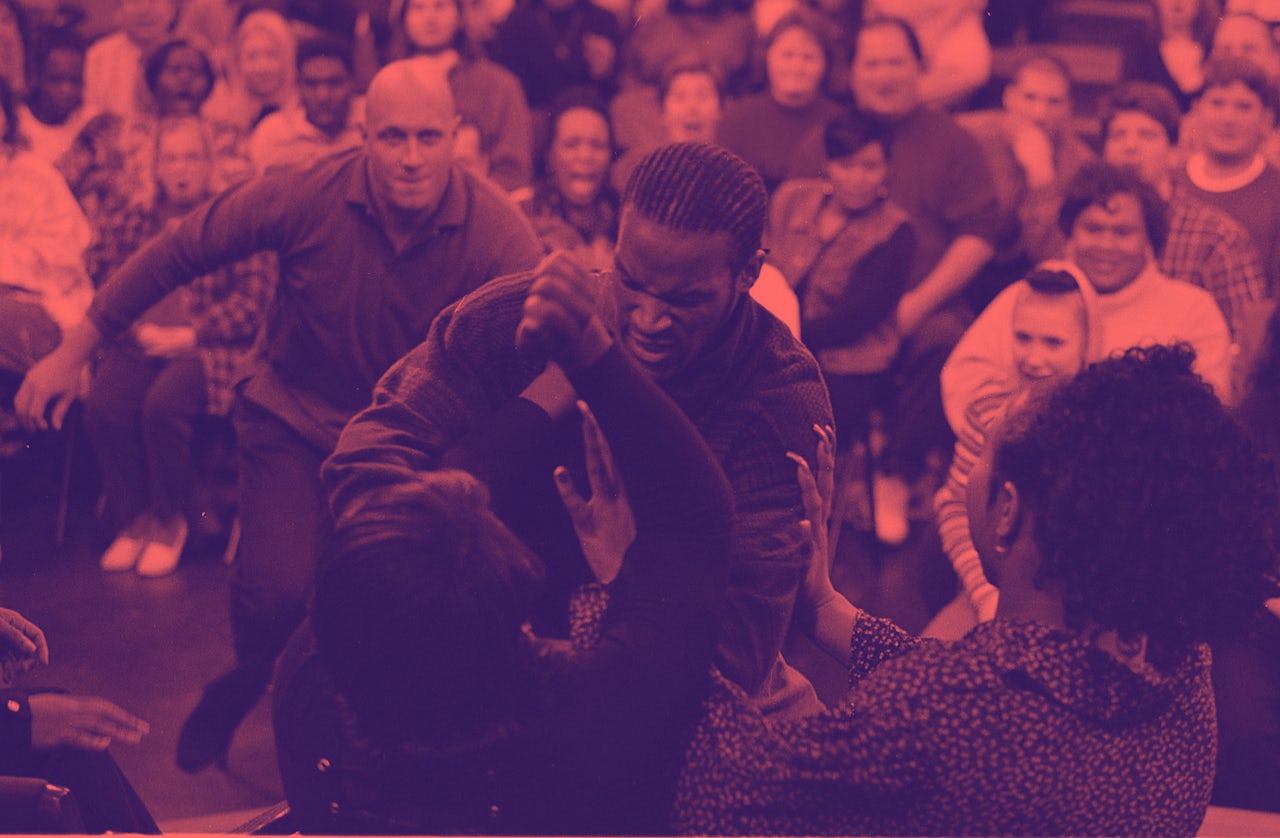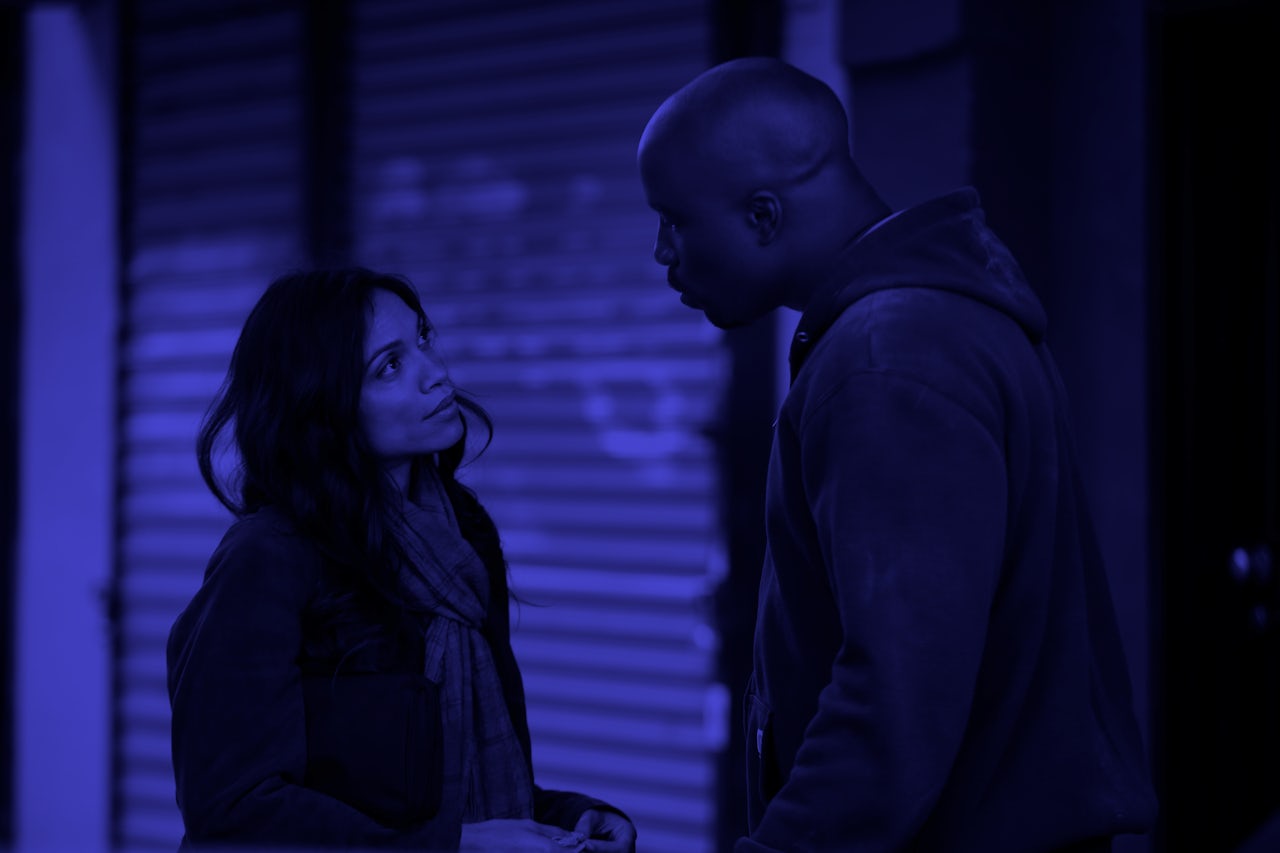To support myself in college, I worked a number of odd jobs. The most memorable was a stint as a cashier at a grocery store. For a year, I belonged to the 10 percent of Americans employed in retail. I wore a red uniform shirt and OSHA-approved rubber shoes. My colleagues at the Giant Eagle in Pittsburgh, Pennsylvania, would have made a great focus group for understanding the lives of working-class Americans. They were generally older, with at least one pressing financial concern, and just barely getting by with each paycheck. Being a student — despite how prohibitively expensive that has become — meant that I experienced an entirely different reality from the people at my job. I noticed this most in the TV I’d end up watching in the breakroom. Most days, there was a steady flow of people on break watching one of three shows: Judge Alex, Maury, and Dr. Oz, a perfect sampling of daytime television’s wide-ranging, often cringe-worthy, offerings.
Watching daytime TV can feel a lot like being frozen in time. The mostly tame sensibilities of primetime are nonexistent between the hours of 10 a.m. and 5 p.m, when Shows like Maury, which has been on the air for 26 years, parade one-dimensional representations of the black and the poor in between advertisements for questionable diet pills. The programming block is full of deadbeat fathers bickering with angry exes over child support, and familial spats ranging from the mundane to the morbid and obscene. The Jerry Springer Show, a frontrunner of the genre that premiered the same year as Maury, for example, features guests getting into physical altercations, during which the signature crowd chant of "Jerry, Jerry, Jerry!" fills the air. The show is also shamelessly offensive. As recently as 2013, Jerry Springer ran a segment where two black men had to play basketball in competition over a woman.
Daytime TV — the block of programming that airs after the popular morning talk shows and before the nightly news — developed in the early days of broadcast television as a home for shows catering to housewives tending to domestic duties at home. In the ’50s and ’60s, daytime advertisements focused almost exclusively on household chores, cooking, and women’s needs. Shows like the courtroom reenactment series Day in Court and the game show Do You Trust Your Wife? were early iterations of the type of pulp television series that are popular today. There was little in terms of scandal in this early era of daytime television; one controversial talk show host, Les Crane, caused a stir when he interviewed a gay man on the air. (He wanted to bring on a lesbian woman as well, but she declined).
As Crane pushed the envelope of what was acceptable on TV, the same was occurring in the real world. In the ’60s, the rise of the counterculture and a boom in protest movements brought a number of social issues into the public consciousness. The Phil Donahue Show, which premiered in 1967 with firebrand host Phil Donahue, tapped into that zeitgeist. Donahue made it a point to bring on guests from emerging movements around the country, and the talk show is credited with introducing hip-hop to television audiences in 1984. The Morton Downey Jr. Show, which premiered in 1987 and ran until 1989, laid much of the groundwork for the type of brash, confrontational style of talk shows that we see today. Downey would chain smoke on air and incite fights between his guests. He was also ardently politically incorrect, coining phrases like “pablum puking liberal,” to describe progressive thinkers. The genre of controversial daytime talk show peaked with The Oprah Winfrey Show, which premiered in 1986 with many of the same types of guests as Morton Downey Jr. and none of the aggressive conservatism. An episode featuring skinheads is thought to have caused Winfrey to change the tone of the show, drawing a moral line that many other daytime talk shows would gladly cross.
By the time Jerry Springer came on the air in 1991, a new dynamic had taken over daytime TV. Hungry for the ratings that outlandish and borderline offensive programming guaranteed, shows like Ricki Lake, The Jenny Williams Show, and Maury added a salacious twist to the popular talk show, inviting on guests who would be seen as oddities by conventional audiences at the time. Members of essentially any marginalized group, from poor blacks to single mothers to people who identified as LGBT, were brought on to participate in what amounted to televised freak shows. With Reagan’s moralistic crusade still lingering in the public imagination, the ’90s also found the nation in the grip of a full-on “culture war.” Conservative pundit William J. Bennett, along with Senators Joseph I. Lieberman and Sam Nunn, launched a campaign in 1995 that sought to “take the trash out” of daytime television talk shows. The group took issue with the unrefined nature of controversial talk shows and worried about their impact on the moral fiber of America. They even launched a blitz of television ads to urge companies to stop advertising on edgier shows like Jerry Springer and Sally with the hope that pulling the ad dollars these shows depended on would eradicate them altogether.
“So, you had LGBT people on TV in a way where their identity can be secondary.”
Instead, programs like Maury and Ricki Lake only got more popular. A precursor to the explosion of reality television in the early 2000s, daytime talk shows, colloquially known as “tabloid talk shows,” appealed to a curiosity about the human condition, as well as the undeniable appeal of watching a car crash. In the ’90s, terms like “politically correct” and “identity politics” were at the forefront of public discourse, and bringing these conversations into reality, albeit inelegantly, captivated audiences. Jerry Springer famously brought on members of the Ku Klux Klan to argue with — and eventually fight — black activists.
During this period in the early and mid '90s, it was uncommon for openly gay people to appear on television at all; that visibility was even smaller for transgender people. In his 1998 book Freaks Talk Back, sociology professor Joshua Gamson argues that the increased visibility of marginalized groups on shows like Jerry Springer contributed to their broader acceptance over time.
“With a lot of these shows, the sort of interpersonal drama took center stage,” Gamson explained over the phone. “So, you had LGBT people on TV in a way where their identity can be secondary.”
Still, Gamson is careful not to categorize this crop of talk shows as magnanimous in their approach. Rather than making a concerted effort to redress issues of visibility in media — a problem that persists to this day — these talk shows were essentially trying to one-up each other to bring on the most outrageous guests, he said. A consequence of this was the inclusion of lower income people, racial minorities, and any population that, in the ’90s, existed on the fringes of the mainstream. For many groups, it was the first time they could be seen on a national platform.
“There were not and still aren’t that many images of poor and working-class people on TV,” said Gamson. “The ones that do [exist] tend to be narrow, predictable kind of stereotypes. And so, there was a lot more room on daytime TV for people from working-class and poor backgrounds to show up on TV and talk and argue.”
Today, the audience for daytime television remains a sizable, albeit contained, portion of TV’s overall audience. Viewers of the most popular syndicated daytime shows tend to be older women; the median age of a daytime television viewer is 60. Twenty percent of viewers make less than $20,000 a year, and 85 percent don’t have college degrees. Daytime TV can be understood as a microcosm of America’s treatment of the marginalized. This niche programming block, almost entirely ignored by mainstream culture, is a true reflection of American values.
Take, for example, the gratuitous commercials. Advertisers are well aware of daytime TV viewers’ financial states. Commercial breaks are filled with ads for car insurance, personal injury attorneys, title loan companies, and for-profit universities, all appealing to viewers’ financial insecurity. Many ads falsely promise the opportunity to completely turn one’s life around. Herbalife, a manufacturer of questionable nutritional supplements and health products that makes its profits by running a giant pyramid scheme, famously targets Latinos during popular telenovelas. It airs advertisements for the peer-to-peer scheme as a way to make the viewer rich. DeVry University, a for-profit university that was sued by the FTC in 2014 for false advertising, often runs commercials during daytime shows with exaggerated claims of career success for graduates. The now-shuttered Everest University, another dubious for-profit university, aired pointed commercials during episodes of shows like Maury, targeting low-income African-Americans. In the ads, interchangeable hosts — a black man and a black woman who claim to be former students — speak directly to the camera and admonish the viewer for not doing more to get an education: “You spend all day on the phone anyhow. Why don’t you make a phone call that’s going to help you in your future?” The commercials are so notorious that an entire genre of parodies exists on YouTube.
The duplicitous ads for health cures, shady universities, and quick-fix loans that dominate the daytime programming block exemplify what happens to some demographics that America doesn’t want to acknowledge: exploitation.
Watching daytime talk shows can feel like hearing someone tell offensive jokes over and over again, each time more assured that there won’t be any consequences. The shows are far cries from primetime television, where programs like This Is Us and Modern Family portray aspirational views of America, featuring middle-class or wealthy characters that still skew heavily toward representations of white people. The ads that air during those shows are for tech gadgets and big-budget movies, not predatory promises at a better life.
“I think it would be tempting to see daytime TV as this sort of odd thing only if you think people aren’t still drawn to that version of reality TV,” Gamson said. “In as much as being able to see yourself on TV serves as a form of validation, these shows offer something that is still lacking in mainstream culture.”
In recent months, especially after the 2016 presidential election, it’s become apparent that many Americans exist in filter bubbles of opinion and experience. When I talked to Gamson, he confessed that he hadn’t watched daytime talk shows since he studied them in the ’90s. I wouldn’t know any of these shows were still on the air were it not for my employment as a cashier at a grocery store. The language of daytime TV is specific to an audience that, to a growing number of people, doesn’t even register. It follows the rise of Donald Trump, whose press briefings are among the highest-rated programs on daytime television, bringing in more viewers than General Hospital and The Bold and the Beautiful. For people whose lives don’t appear in mainstream culture, Trump’s appeal is the same as so-called "trash TV;" it is brash, offensive, and unkind. The real people who watch it can’t see themselves anywhere else.



